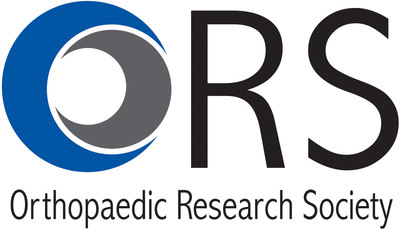ROSEMONT, Ill., June 10, 2014 /PRNewswire-USNewswire/ -- Deciding what shoes to wear is a part of getting dressed each morning. Most people choose their shoe based on fashion or function, or a combination of both. However, for individuals who suffer from knee osteoarthritis, picking the right shoe can make the difference between comfort and worsening joint pain.

Osteoarthritis (OA), also known as degenerative joint disease, affects millions of people. The pain and stiffness caused by deterioration of cartilage that cushions the ends of the bones in the joint can become debilitating. Although age is one of the biggest factors in developing OA, genetics and injury can also play a role in how the condition develops.
Diagnosing the disease can be fairly straightforward as the patient usually feels pain in the joint following exercise or immobility. However, treating OA or preventing its progression is an entirely different story. Controlling pain and improving joint function are two key goals in the treatment of osteoarthritis. To do this, doctors often prescribe analgesics, appropriate exercises or physical therapy and in the worse-case scenario, joint replacement surgery to improve their patient's condition.
But what if something as simple as selecting the right foot wear could improve your prognosis? The 'Loading and Movement' team of Prof. Georg Bergmann and Prof. Georg Duda at the Julius Wolff Institut, Charité-Universitätsmedizin is trying to answer that question. The team, based out of Berlin, Germany, wanted to learn what affect different footwear had on knee joint loading. Ultimately, they hope to improve the prognosis for people living with OA by decreasing their pain and giving them a higher quality of life.
To perform their research, the team has developed special instrumented hip, shoulder, knee and spinal implants. These implants are based on clinically, widely used total joint replacement implants, which have been modified to include sensors and a telemetry system. The team is one of only a few research groups in the world ever to implant telemeterized devices in patients. To date they have implanted nearly 50 patients with these devices. These specialized instrumented implants allow researchers to directly measure the forces inside the joint while the patient is performing various activities (Bergmann et al. 2014,PLoS ONE). In the past these forces could only be estimated.
To date, nine patients with telemeterized knee implants have been enrolled in the team's OA knee study. The researchers began the task of measuring knee joint loading during activities of daily living including walking, stair climbing and sitting down. The effects that different footwear had on the forces generated within the joints was then investigated (Kutzner et al. 2013, J. Biomech). What the team discovered was that when wearing the advanced running shoes, patients experienced a reduction in maximum forces measured at the knee. However, when the patients wore dress shoes, the forces measured at the knee were actually increased. Many OA patients have reported reduced pain after wearing certain kinds of sport shoes. Although this pain relief might be attributed to wearing these shoes, further studies are needed.
Where does the team go from here? Similar to other data generated by the team using telemetric hip, shoulder, knee and spinal implants, these data will be included in the open access database called OrthoLoad www.orthoload.com that was originally created by the team in 2001 and continues to be updated. The team is convinced that the results of their research will be valuable not only to patients who suffer from OA, but also to shoe designers, implant designers, orthopaedists, physical therapists and athletes.
The 'Loading and Movement' team currently consists of: Dr. Ines Kutzner, Verena Schwachmeyer, Dr. Alwina Bender, Dr. Friedmar Graichen, Mr. Philipp Damm, and Mr. Jörn Dymke. Prof. Georg Bergmann and Prof. Georg Duda are members of the Orthopaedic Research Society (ORS). The ORS (www.ors.org) strives to be the world's leading forum for the dissemination of new musculoskeletal research findings. The musculoskeletal system provides form, support, stability, and movement to the body.
Logo - http://photos.prnewswire.com/prnh/20130122/MM45506LOGO
SOURCE Orthopaedic Research Society

